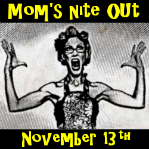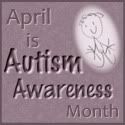More babies were born in the United States in 2007 than in any other year in American history, according to preliminary data reported Wednesday by the National Center for Health Statistics.
The 4,317,000 births in 2007 just edged out the figure for 1957, at the height of the baby boom. The increase reflected a slight rise in childbearing by women of all ages, including those in their 30s and 40s, and a record share of births to unmarried women.
But in contrast with the culturally transforming postwar boom, when a smaller population of women bore an average of three or four children, the recent increase mainly reflects a larger population of women of childbearing age, said Stephanie J. Ventura, chief of reproductive statistics at the center and an author of the new report. Today, the average woman has 2.1 children.
Also in 2007, for the second straight year and in a trend health officials find worrisome, the rate of births to teenagers rose slightly after declining by one-third from 1991 to 2005.
“The 14 years with teenage birth rates going down was one of the great success stories in public health, and it’s possible that it’s coming to an end,” said Sarah S. Brown, chief executive of the National Campaign to Prevent Teen and Unplanned Pregnancy, a private group in Washington.
But officials cautioned that the reversal has been small — a rise of 2 percent in 2006 and 1 percent in 2007 — and that it is too early to know what the rate will do next.
Even at the low point in 2005, the United States had the highest rates of teenage pregnancy, birth and abortion of any industrialized country. Because teenage births carry higher risks of medical problems and poverty for mother and child, state health agencies, schools and private groups have mounted educational campaigns to deter teenage pregnancy.
Still, the reasons for the steep decline and recent reversal are poorly understood. The discussion is colored by politics: some liberals say “abstinence only” sex education and restrictions on distribution of contraceptives are only leading to more pregnancies, while conservatives tend to blame the ever more permissive social climate.
Teenage abortion rates have been falling for years and are not believed to be a major factor in the birth trends. “The decline resulted from less sex and more contraception,” Ms. Brown said. “So the new trend must involve some combination of more sex and less contraception.”
The new report also found that the share of births to unmarried women of all ages reached a record high of 40 percent of all births in 2007, the most recent data available. This continued a marked trend upward in unwed births since 2002.
The growth has mainly been fueled by increases among adult women, Ms. Ventura said. Racial and ethnic differences remain large: 28 percent of white babies were born to unmarried mothers in 2007, compared with 51 percent of Hispanic babies and 72 percent of black babies. The shares of births to unwed mothers among whites and Hispanics have climbed faster than the share among blacks, but from lower starting points.
In yet another record high, the share of deliveries by Caesarean section reached 32 percent in 2007, up 2 percent from 2006. Experts have repeatedly said some C-sections are not medically necessary and impose excess costs, but the rate has steadily climbed, from 21 percent in 1996.



























1 comment:
Interesting statistics. Funny enough I didn't birth a child in 2007 (just in 2003, 2005, 2006 & 2008!). I can believe the rise in c-sections. I don't know what "experts" they are talking to because all the one's I've talked to have pushed me to have sections... I'll get off that soapbox now before I really get going.
Anyway. Thanks for the interesting article.
Post a Comment